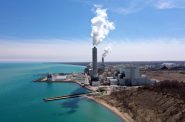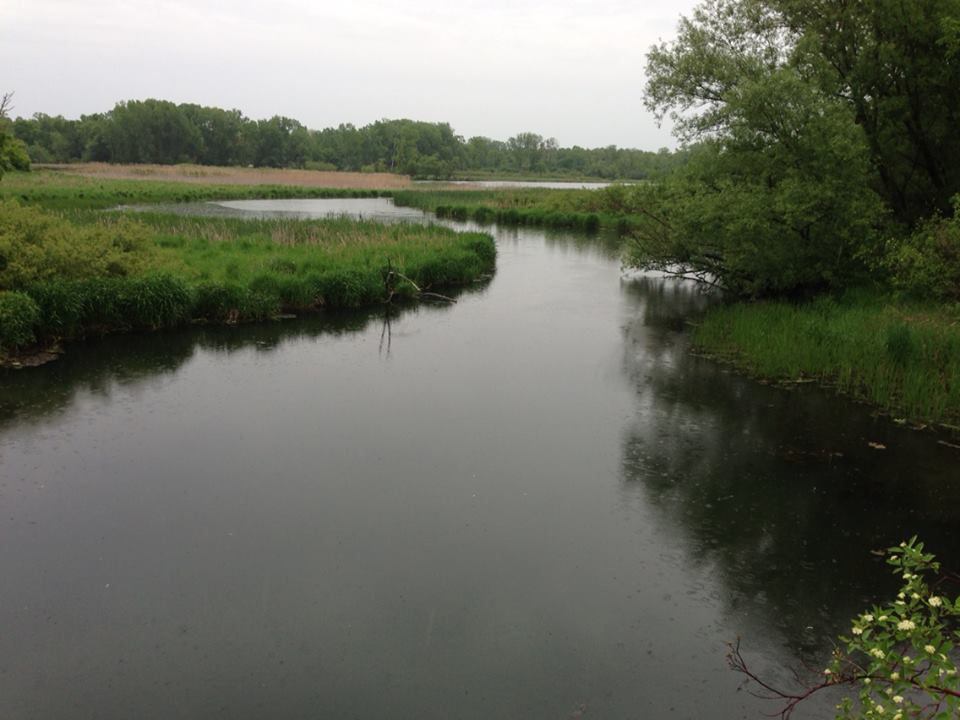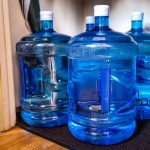Water Pollution Skyrockets Under Walker
His own data shows addition of 804 polluted waterways.
Gov. Walker says he’s taking Wisconsin in the right direction, but that destination may be a place where you don’t want to smell, drink or fish the public waters, his own data show.
The governor has said here and here and elsewhere that he always leaves the environment cleaner than he found it.
The data show the opposite; official auditing shows Wisconsin ignored its water pollution enforcement rules 94 percent of the time while inspections were declining as a matter of policy.
Some good news: Legislators are working to require the DNR to issues public notices of water pollution permit violations, correcting if not actually creating a public information system that would require public notifications.
And, yes, it’s hard to track and keep straight all the legislation and executive actions since early 2011 that are intentionally undermining public health and enabling contamination and filth for profit in Wisconsin – – from wetlands filling to shoreline construction to green-lit groundwater contamination from big feedlots to new toxic sulfide mining permissions to proposed rollbacks in air quality to already-implemented, freshly-tolerated, algae-breeding phosphorous discharges into state waterways that all belong to the public.
And mentally underline “phosphorous” as you focus on just two facts gathered from the links that follow:
* There has been a doubling under Walker of the number of polluted waterways in the state since his 2011 swearing-in.
* And there have been more than eight times as many waterways – – 804 – – newly added to the official polluted lists (government likes the sanitized label “impaired”), far more than the 96 waterways improved enough to be removed from the lists.
Grasping that is part of the battle to keep up with all the cuts and their implications by Walker, the GOP Legislature and a compliant Wisconsin Department of Natural Resources on the agency’s mission, staffing, budgets, and science that are designed to reward polluters and more easily degrade the state’s environment.
When Walker travels to faraway places like China he can wax talking point, fact-checking free about water quality – –
“This partnership will allow Wisconsin’s leadership in clean water and energy to reach new heights,” said Governor Scott Walker.
– – even though information posted by his own administration shows he is not leaving the water cleaner than he found it.
Read through the links and data bases in the information below – – and, remember, the numbers are Walker’s and are on his administration’s web pages (unless they go the way of the DNR’s scrubbed climate science page).
So when Walker comes to your town for your vote, and you see your lake, or river and stream segments on his lists of impaired waters, ask him why.
And why the summary numbers are diving in the wrong direction statewide.
And what he’s done lately to make your waters more drinkable, fishable, swimmable, and boatable.
After all, who gets a contract extension, in baseball or politics, if you’re batting .125?
* Here is a link to the official DNR 2012 list, which covers the last year of the Jim Doyle administration and the first year of Walker’s, and text from the DNR’s summary:
Every two years, Section 303(d) of the Clean Water Act requires states to publish a list of all waters that are not meeting water quality standards. The existing Impaired Waters List includes more than 700 rivers, streams and lakes. In the 2012 list, updates include 147 new waters to the list. Twenty-eight waters were delisted, including three streams that have been successfully restored: German Valley Branch in Dane County and Eagle and Joos Valley Creeks in Buffalo County.
* Here is the DNR link to the 2014 list. Again, the trends were not good:
In the 2014 list update, DNR added 192 new waters. A majority of the listing additions were waters that exceed total phosphorus criteria. A significant number of new listings were also based on poor biological condition. Read more about specific restorations and/or search and learn about Wisconsin’s impaired waters with the Impaired Waters Search Tool. [How to use the Search Tool]
Using the search tool, I count 23 deletions of impaired waters, compared to the 192 additions.
* More lopsided data on the DNR list for 2016 in favor of pollution:
In the proposed 2016 list update, DNR proposes to add 225 new waters. A majority of the listing additions were waters that exceed total phosphorus criteria. A significant number of new listings were also based on poor biological condition. Ten waterbodies are proposed to be delisted.
* Same story in the 2018 list:
In the proposed 2018 list update, DNR proposes to add 240 new water segments. A majority of the listing additions were waters that exceed total phosphorus criteria. Thirty-five waterbodies are proposed to be delisted.
So allowing for some portion of the total to have taken place in one year of the Doyle era, and also allowing for some late changes, the cumulative numbers in these reports which encompass most of Walker’s tenure show the addition of 804 newly listed polluted waterways to the “more than 700” cited in 2012.
The additions, 804, outpaced deletions, 96, by a ratio of more than eight-to-one, and leaves Walker with about double what he inherited.
Furthermore:
Impaired waters in Wisconsin are affected by a variety of pollutants. The top three are: mercury, total phosphorus and sediment…
Note that mercury contamination is clustered heavily in 146 Northern Wisconsin waterways that are under consumption restrictions.
While natural erosion produces nearly 30 percent of the total sediment in the United States, erosion from human use of land accounts for the remaining 70 percent. In agricultural watersheds, the most significant source of sediment is tilled fields….Improperly managed construction sites also contribute significant amounts of sediment to local waterways; up to 25 times that of agricultural lands (Chesters, 1979) and 2,000 times that of forested lands (EPA 833–F–00–008, R 12/2005 [PDF exit DNR])…
Phosphorus has long been recognized as the controlling factor in plant and algae growth in Wisconsin lakes and streams. Small increases in phosphorus can fuel substantial increases in aquatic plant and algae growth, which in turn can reduce recreational use, property values and public health.
- Many lakes and streams are listed as impaired due to phosphorus pollution or sediment, decreasing their recreational value and economic impact.
- Dozens of waters statewide experience harmful algal blooms fueled by the nutrient and last year, 35 people in Wisconsin reported human health concerns and the death of at least two dogs due to blue-green algae.
- Department of Health Services Blue–Green Algae [exit DNR]
- Smelly cladophora fueled by phosphorus washes ashore Lake Michigan beaches.
- Recent statewide stream assessment data suggests that thousands of streams may have excess phosphorus levels. In addition to decreasing the dissolved oxygen that fish and other aquatic creatures need to survive, such excess phosphorus causes major changes in lake and stream food webs, which ultimately result in fewer fish and fish predators.
James Rowen, a former journalist and mayoral staffer in Milwaukee and Madison, writes a regular blog, The Political Environment.
Op-Ed
-
Unlocking Milwaukee’s Potential Through Smart Zoning Reform
 Jul 5th, 2024 by Ariam Kesete
Jul 5th, 2024 by Ariam Kesete
-
We Energies’ Natural Gas Plans Are A Mistake
 Jun 28th, 2024 by John Imes
Jun 28th, 2024 by John Imes
-
Milwaukee Needs New Kind of School Board
 Jun 26th, 2024 by Jordan Morales
Jun 26th, 2024 by Jordan Morales





















I used to hold Urban Milwaukee in much higher esteem. With op-eds like this, I find it very hard to do.
The above premise that the waters have become more polluted is categorically false. The reason more waters are listed as impaired is because the standards have changed and they are testing in more locations. Have some integrity, Mr. ROWEN.
Hey look at the bright side. Now that career politician Scott Walker and republicans have approved high capacity wells we won’t have to worry about all these contaminated waterways because they will all be dried up and gone soon. Thanks Walker! Thanks republicans!
If UM is so bad, why are you here, reading and posting? And again as per usual you have selective outrage when it comes to op-eds and press releases.
I for one appreciate the constant barrage of negativity here. It provides a public service and a warning. Wisconsin seems like the worst place in the world, The sky is falling 24/7. Not sure who’d ever live here or even visit. They’d be nuts. Thanks UM.
@Chuck, you mean the constant barrage of “reality.” Walker’s Wississippi really is a disaster but we’re getting her back on track to being Wisconsin again soon. Soon being in November.
This is what happens after 50% of the state is crapped on and ignored by career politician Scott Walker and republicans. Chickens are coming home to roost republican charlatans!
DUMP WALKER 2018!!
DUMP ALL REPUBLICANS 2018!!
“Championing Urban Life in the Cream City”
I’d love to see a UM Point/Counterpoint column featuring Terry & Wisconsin Conservative Digest. How hilarious would that be. Make it happen editors
@Chuck, UM editors, I’m game! Anytime, any place. I am also open to the idea of a “feats of strength” type of competition between myself and ol’ Bob aka WCD. Any time, any place!
Politics would destroy us all. Simple truth will prevail. Common sense logic for anyone?
In 2011 the WI DNR approved changes to the water pollution code only because it received a letter from the EPA because Wisconsin had so many deficiencies in their water codes. The change in standards happened only because Wisconsin was backsliding. So, its not because our standards are higher that we have this problem, its because the regulators are failing to to follow their own policies……94% of the time according to their own audit.
I just overheard a couple of Madison millenials talking about how they “can’t wait to go kayaking this spring on some of Wississippi’s “fertilizer freeways…” I kid you not.
Readers: please note paragraph # 7 in Rowen’s piece:
“There has been a doubling in the # of polluted waterways in WI under Walker … since he took office in 2011.”
The above does not surprise me because I see no concern on Walker’s part for the health of our environment. Those who think that Rowen is being too negative need to consider paragraph # 7. How many more of our waterways will be degraded from 2019 to whenever the weasel is chased out of the governor’s mansion if the weasel wins another election in 2018?
Forgive me, readers, for calling our governor a weasel in post # 12. The dictionary I have at hand defines a weasel as a small , ferocious, flesh-eating mammal. Our current governor is clearly all of the above, yet he is presumably human, too. My neglecting including the human feature may have been due to remembering enjoying a chant that was popular at the rallies in Madison and Milwaukee and elsewhere in our state in 2011, when tens of thousands of protestors emerged instantaneously to resist Act 10: Walker’s assault against collective bargaining for state employees. That chant went like this:
(speaker with bullhorn) “Not a Badger”)
(crowd response) “Walker is a weasel.”
I felt slightly adolescent the first time or 2 that I chanted “Walker is a weasel,” but that hesitancy diminished the more I chanted as I recognized that the dehumanizing chant was a just response to the dehumanizing proposals promoted by the small, flesh eating mammal who had weaseled his way into becoming our governor.
“Walker is a weasel ” springs easily from the lungs. The inevitable accents on the first and 4th syllables of that 7 syllable chant enhance the alliteration of WALKER and WEASAL.
Consider vernacular uses of the word weasel, and tell me if this shoe fits.
Career politician Scott Walker and republicans gutted the DNR and common sense environmental regulations and now we get to drink manure water.
Thanks Walker! Thanks republicans!
AG,
in God we trust.
All others bring links.
“Have some integrity,” apologize to “Mr. ROWEN.”